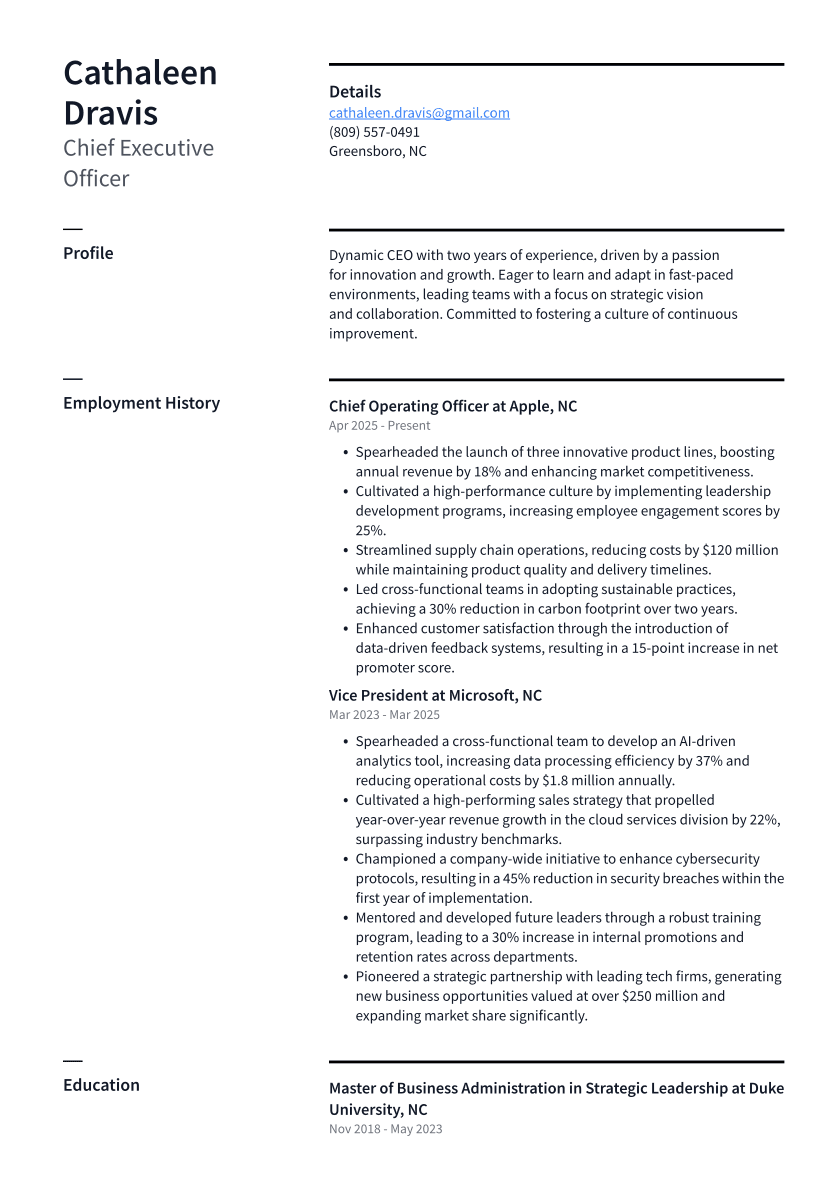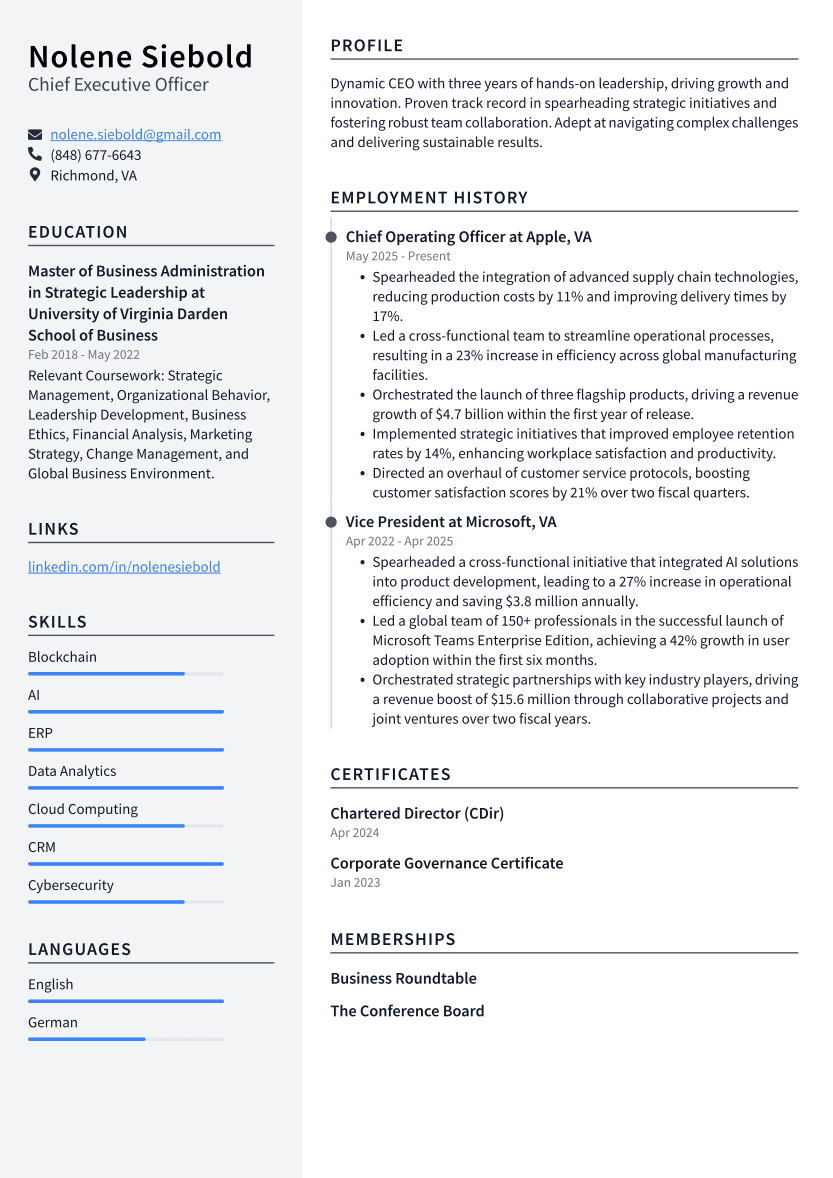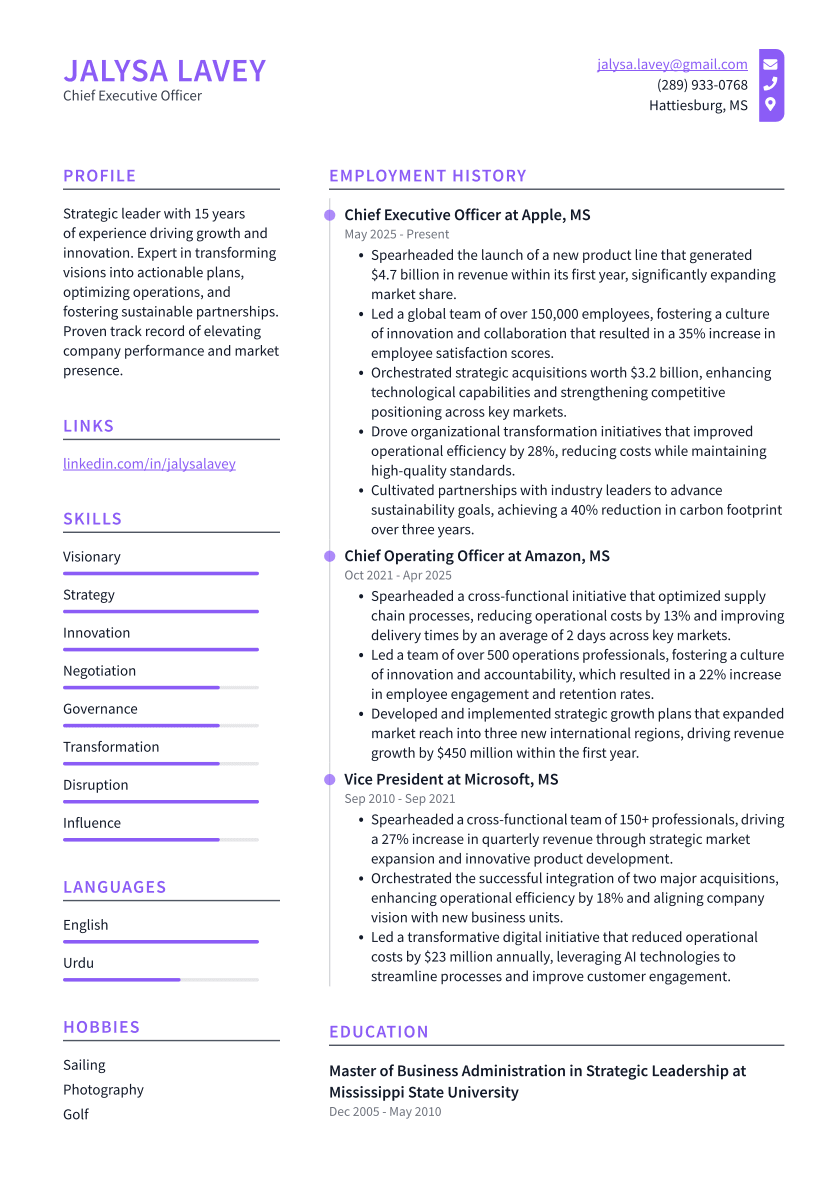Chief Executive Officer Resume Examples

Crafting a resume for a CEO role is like donning a tuxedo for the Oscars—you’ve got to make that first impression count. This article aims to arm you with insights and strategies to piece together a document that screams leadership and strategy. Readers will uncover tips on how to succinctly package years of lofty accomplishments into a sleek, compelling narrative.
What to Include on a Chief Executive Officer Resume
- Contact Information: Name, phone, email, LinkedIn profile.
- Summary: Brief overview of leadership and vision.
- Work Experience: Key roles and achievements at executive level.
- Skills: Core competencies in leadership and management.
- Education: Degrees and relevant certifications.
- Board Memberships: Current and past board positions.
- Awards and Honors: Notable recognitions and accolades.
- Professional Affiliations: Associations and industry memberships.
- Publications: Articles, books, or research contributions.
- Languages: Proficiency in additional languages.
For a CEO role, emphasize strategic vision and decision-making prowess in the summary, highlighting experience driving organizational growth and innovation. In the achievements section, focus on transformative initiatives, such as leading mergers or expanding market presence, showcasing quantifiable impacts.
Pro Tip: Crafting a CEO resume with strategically chosen skills and keywords is crucial for navigating ATS filters, ensuring it stands out in a digital pile and reaches human eyes.
How to Make Your Chief Executive Officer Resume Stand Out
Transform your resume by spotlighting achievements with tangible results, like "Increased annual revenue by 30% through strategic partnerships," to illustrate your impact. Highlighting specific, quantifiable outcomes not only showcases your leadership but paints a vivid picture of your transformative abilities.
- Opt for a clean, minimalist design with ample white space; this makes scanning for key information swift and painless. A cluttered page? A CEO's nightmare.
- Emphasize key achievements and roles with bold headers and bullet points. This draws the eye and highlights crucial information without excessive fluff.
- Choose a professional, easy-to-read font like Helvetica or Garamond, and maintain consistent font sizes throughout. Visual harmony speaks volumes in professionalism.
Pro Tip: Tailoring your resume for each CEO application highlights your specific strengths and aligns your experience with the company's unique needs.
Resume Example 1: Entry-Level Chief Executive Officer
An entry-level CEO resume emphasizes potential, adaptability, and diverse foundational skills, unlike mid-level or senior resumes that showcase extensive leadership accomplishments and strategic influence.
Resume Example 2: Experienced Chief Executive Officer
A mid-level CEO resume balances proven leadership experience with the ambition to ascend higher, unlike entry-level resumes, which focus on potential, or senior resumes that highlight extensive accomplishments.
Resume Example 3: Senior/Leadership Chief Executive Officer
A senior-level CEO resume typically spotlights strategic leadership achievements, high-impact decisions, and overarching visions for organizations, setting it apart from entry or mid-level resumes that focus more on skill development and specific operational accomplishments.
Chief Executive Officer Resume Do’s, Don’ts, and Checklist
DO'S
- Highlight measurable achievements that demonstrate leadership and impact.
- Emphasize strategic vision and decision-making skills tailored to industry specifics.
- Craft a compelling executive summary that captures core competencies and unique value.
DON'TS
- Don’t include generic objectives that fail to showcase your specific vision or leadership philosophy. Avoid listing responsibilities without demonstrating measurable achievements or outcomes. Steer clear of using jargon-heavy language that might obscure your clear capability.
CHECKLIST
- Emphasize strategic leadership and transformative achievements.
- Highlight impactful decisions that drove company growth.
- Showcase collaboration with stakeholders and board members.
- Quantify successes with measurable results and data.
- Tailor experiences to align with the targeted industry.
- Include innovation and change management advancements.






